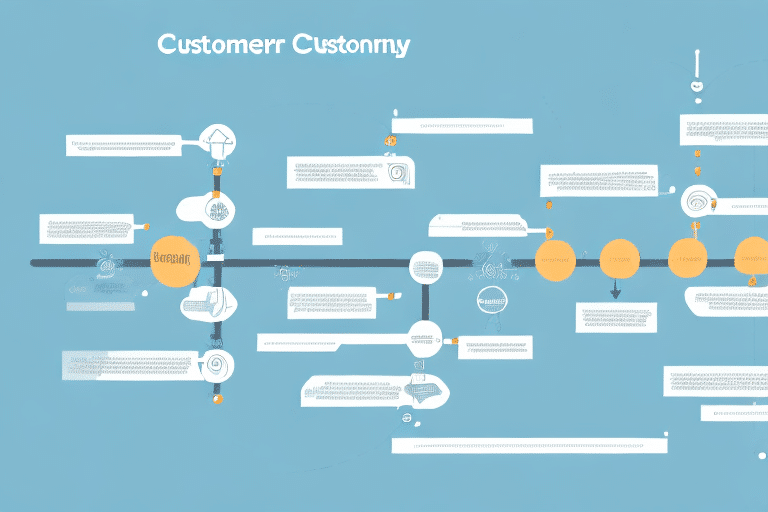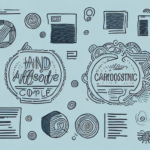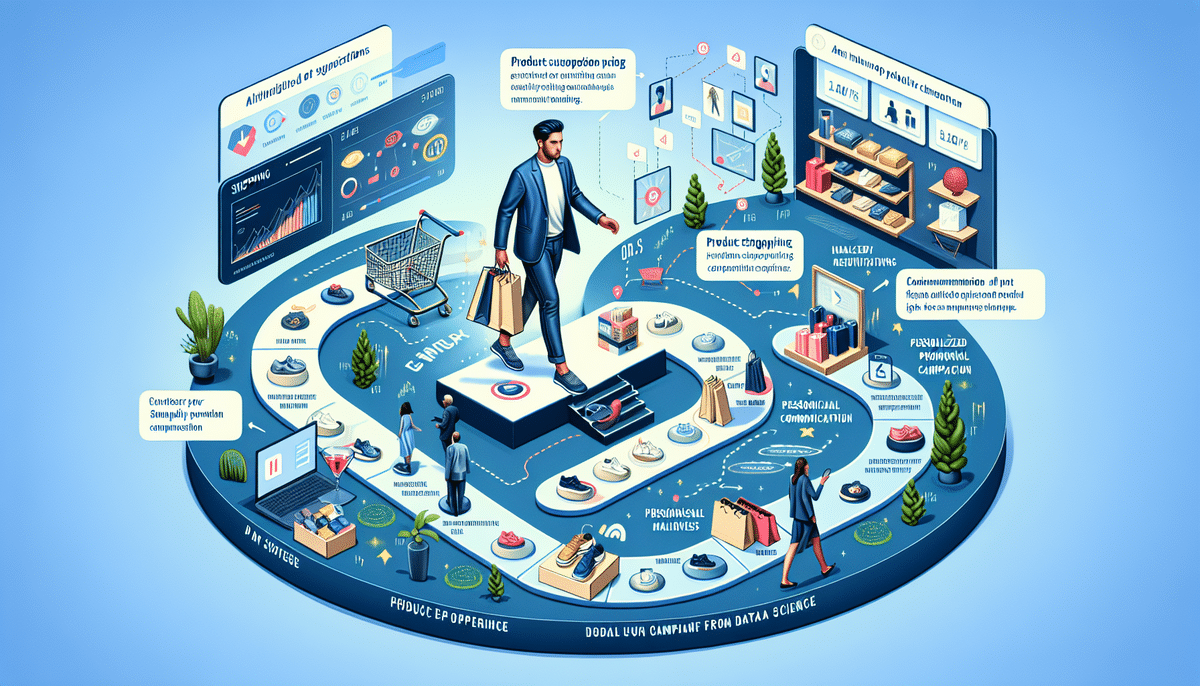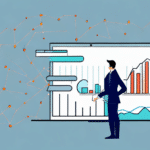Creating a Customer Retention Framework for Maximum Success
In today's competitive business landscape, customer retention can determine the success or failure of a company. A customer retention framework is an essential component of every business that aims to thrive in the long run. It helps businesses build a loyal customer base, improve customer satisfaction, and ultimately increase revenue. In this article, we will explore the importance of customer retention, the challenges it presents, and how to overcome them. We will also discuss the role of personalization, the importance of building trust, the benefits of investing in customer retention strategies, and tips for developing long-lasting relationships with your customers.
Importance of Customer Retention
Customer retention should be a primary goal for every business. According to a study by Bain & Company, increasing customer retention rates by 5% can increase profits by 25% to 95% (source). It is less expensive to retain existing customers than to acquire new ones. Loyal customers tend to purchase more frequently and are more likely to recommend your business to others.
Cost-Effectiveness
Acquiring new customers can cost five times more than retaining existing ones (Bain & Company). By focusing on customer retention, businesses can reduce marketing and acquisition costs.
Increased Customer Lifetime Value (CLV)
Customer retention leads to increased CLV, which translates into higher revenue and profitability in the long run. A higher CLV indicates a more sustainable business model.
Enhanced Brand Reputation
Satisfied customers are more likely to leave positive reviews and feedback, enhancing your brand reputation. Conversely, dissatisfied customers may leave negative reviews, which can harm your brand's image and deter potential customers.
Challenges of Customer Retention and How to Overcome Them
While customer retention is beneficial, it comes with several challenges. Customers have more choices than ever before, and they can easily switch to competitors if they are not satisfied with the products or services offered.
High Competition
To overcome the challenge of high competition, businesses need to focus on improving their customer experience, providing exceptional customer service, and building strong relationships with their customers. This can be achieved by offering personalized experiences, engaging with customers on social media, and implementing loyalty programs.
Adapting to Evolving Market Trends
The market and customer preferences are constantly evolving. Businesses must stay up-to-date with the latest trends and adapt their strategies accordingly. Continuous research and analysis of customer behavior and preferences, as well as monitoring the competition, are essential. By staying ahead of the curve and offering innovative solutions, businesses can retain their customers and maintain a competitive advantage.
Strategies for Effective Customer Retention
Implementing effective strategies is crucial for maintaining a loyal customer base. The following strategies can help businesses improve customer retention rates:
Understanding Customer Needs and Wants
Understanding your customers' needs and wants is essential for building a customer retention framework. It helps businesses tailor their products, services, and marketing strategies to meet their customers' expectations. Utilizing customer feedback and data analysis can identify pain points and areas for improvement. By continually enhancing the customer experience, businesses can build and maintain a loyal customer base.
Creating Buyer Personas
One effective way to understand your customers' needs and wants is by creating buyer personas. A buyer persona is a fictional representation of your ideal customer, based on market research and real data about your existing customers. Detailed buyer personas provide insights into customers' motivations, goals, and pain points, enabling businesses to create targeted marketing campaigns and personalized experiences that resonate with customers and drive loyalty.
Building Trust with Your Customers
Building trust is crucial for customer retention. Trust is established through transparent communication, high-quality products, and exceptional customer service. Listening to customers and addressing their concerns promptly demonstrates that a business values their opinions and is committed to meeting their needs.
Personalization in Customer Retention
Personalization is essential for building a loyal customer base. Customers expect personalized experiences that cater to their specific needs and preferences. By leveraging customer data, businesses can offer personalized product recommendations, customized marketing messages, and tailored promotions, which build brand loyalty and increase customer retention rates (source).
Leveraging Technology to Improve Customer Retention
Technology plays a pivotal role in improving customer retention rates by enhancing customer experiences. Implementing a customer relationship management (CRM) system, using social media to engage with customers, and offering a frictionless checkout process are some effective ways to leverage technology. Additionally, utilizing data analytics and artificial intelligence allows businesses to create targeted marketing campaigns that speak directly to customers' interests and needs, increasing the likelihood of repeat purchases and customer loyalty.
Measuring the Effectiveness of Your Customer Retention Framework
Measuring the effectiveness of your customer retention framework is crucial for long-term success. Tracking metrics such as customer churn rate, customer satisfaction, and customer lifetime value (CLV) regularly allows businesses to identify areas for improvement and adjust their retention strategies accordingly.
Key Metrics for Customer Retention
- Customer Churn Rate: The percentage of customers who stop using your product or service over a specific period.
- Customer Satisfaction Score (CSAT): A measure of how satisfied customers are with your products or services.
- Customer Lifetime Value (CLV): The total revenue a business can expect from a single customer account.
Net Promoter Score (NPS)
NPS measures the likelihood of customers to recommend your business to others on a scale of 0-10. A higher NPS indicates greater customer satisfaction and loyalty. By calculating the NPS, businesses can gauge the overall satisfaction of their customers and identify potential brand advocates. Additionally, businesses can use NPS to track changes in customer sentiment over time and adjust their retention strategies accordingly (Net Promoter).
Benefits of Investing in Customer Retention Over Acquisition
While customer acquisition is essential for growth, retaining customers is more cost-effective and leads to higher profitability. According to research by Invesp, the probability of selling to an existing customer is 60-70%, whereas the probability of selling to a new prospect is only 5-20% (Invesp).
Cost-Effectiveness and Profitability
By investing in customer retention strategies, businesses can improve customer satisfaction, increase revenue, and reduce customer churn. Happy customers are more likely to refer their friends and family, leading to more business without additional acquisition costs.
Effective Retention Strategies: Customer Service and Loyalty Programs
Providing exceptional customer service is a highly effective retention strategy. When customers feel valued and heard, they are more likely to remain loyal to a business. Training customer service representatives to be empathetic and responsive to customer needs, offering personalized solutions, and promptly addressing any issues or concerns are key elements of exceptional customer service.
Additionally, implementing loyalty programs, such as rewards or discounts for repeat customers, can incentivize continued patronage. For example, Starbucks offers a rewards program that allows customers to earn points for every purchase, which can be redeemed for free drinks and food items. This not only incentivizes customers to continue purchasing from Starbucks but also creates a sense of exclusivity and belonging among loyal customers (Business Insider).
Case Studies: Successful Customer Retention Strategies
Many businesses have successfully implemented customer retention strategies that can serve as models for others. For example, Amazon offers personalized recommendations based on customer browsing history, enhancing the shopping experience and encouraging repeat purchases. Zappos is renowned for its exceptional customer service and offers free shipping on all orders, making shopping convenient and risk-free for customers.
Another successful customer retention strategy is the implementation of loyalty programs. As mentioned earlier, Starbucks' rewards program not only incentivizes repeat purchases but also fosters a sense of community among its customers. By studying these successful strategies, businesses can adapt and improve their own customer retention frameworks.
Tips for Developing Long-term Relationships with Your Customers
Developing long-lasting relationships with customers requires consistent effort and commitment. Here are some actionable tips:
- Provide Exceptional Customer Service: Ensure that customers feel valued and heard by offering responsive and empathetic service.
- Offer Personalized Experiences: Tailor your products, services, and communications to meet individual customer needs and preferences.
- Engage Regularly: Use email marketing, social media, and other channels to maintain regular communication with your customers.
- Implement Loyalty Programs: Reward customers for their repeat business with discounts, rewards, or exclusive offers.
- Seek and Act on Feedback: Regularly collect customer feedback and make improvements based on their suggestions to show that you value their opinions.
Common Mistakes to Avoid When Developing a Customer Retention Framework
Developing a customer retention framework can be challenging, and there are common mistakes that businesses should avoid:
- Failing to Listen to Customer Feedback: Ignoring customer feedback can lead to dissatisfaction and churn.
- Neglecting to Update Products or Services: Failing to innovate or improve offerings can cause customers to seek alternatives.
- Not Offering Personalized Experiences: Treating all customers the same can lead to a lack of engagement and loyalty.
To avoid these mistakes, businesses should actively seek and listen to customer feedback, stay updated with the latest industry trends, and offer personalized experiences that meet customers' specific needs and wants.
Creating a Culture of Customer-Centricity Within Your Organization
Creating a culture of customer-centricity requires a shift in mindset throughout the organization. It involves prioritizing the customer experience and making it a focal point of all business activities. This starts with leadership and extends to every employee. Leaders should set an example by proactively addressing customer needs and building relationships.
Training programs and incentives can motivate employees to focus on customer retention and improve the overall customer experience. Encouraging collaboration across departments can ensure that customer feedback is integrated into product development, marketing, and service strategies.
The Future of Customer Retention in the Age of Digital Transformation
In the age of digital transformation, customer retention will continue to be a critical component of business success. Advancements in artificial intelligence, machine learning, and data analytics will enable businesses to offer even more personalized and seamless experiences to customers. Customers will expect fast, efficient, and integrated experiences across all channels, whether online or offline.
Businesses that prioritize customer retention and embrace new technologies will be better equipped to meet these evolving customer expectations. Additionally, the integration of omnichannel strategies will allow businesses to interact with customers across multiple platforms, enhancing engagement and satisfaction.
Conclusion: Key Takeaways for Implementing a Successful Customer Retention Framework
Customer retention is an essential component of every business, contributing to long-term success and profitability. Implementing a successful customer retention framework requires:
- A customer-centric approach
- Commitment to building trust
- Investing in personalization and new technologies
- Regularly measuring and analyzing key retention metrics
- Adapting strategies based on customer feedback and market trends
By following the tips and strategies outlined in this article, businesses can establish a robust customer retention framework that fosters loyal customer relationships and drives sustainable growth.




















